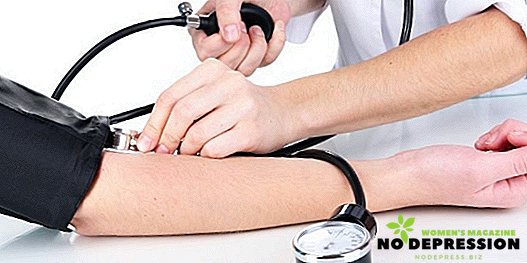Leukocytes are protective white blood cells responsible for protecting the body from external and non-external pathogens. As a rule, they are located and originate in the lymph nodes, bone marrow and spleen. Various types of leukocytes function in the human body, which differ in structure, purpose, and appearance.

What are white blood cells for, their norm
An indefinite portion of the white cells catches and splits foreign bacteria, while others form antibodies and enzymes. All types of white blood bodies contribute to the dynamic movement and have the ability to roll over the walls of the capillaries and wade into the intercellular space, where they cleave foreign microparticles.
The life span of white bodies is 3-12 days. These white cells die off usually in the spleen, liver and in places where the inflammatory process occurs.
Peripheral blood leukocytes are divided into two classifications:
- Granulocytes or granular white blood bodies - there is a large segmented nucleus and special granules in the cytoplasm. Neutrophils, eosinophils and basophils are characterized;
- Agranulocytes or non-granular white blood cells are cells with a simple non-segmented nucleus and without a peculiar granularity. They are divided into lymphocytes and monocytes, depending on their ability to perceive dyes.

Today, one of the most reliable and accurate ways to diagnose pathologies in the body is a blood test. To check the rate of leukocytes should pass a complete blood count.
The leukocyte count in children is caused by age. In adult women and men, the rate is the same and is 4-9 x 109 /liter.
Table 1. The level of leukocytes in the blood, depending on the age of the person.
| Age | Leukocyte count |
|---|---|
| up to 1 year | 6,0-17,5×109 |
| From 1 to 2 years | 6,0-17,0×109 |
| 2 to 4 years old | 5,5-15,5×109 |
| 4 to 6 years | 5,0-14,0×109 |
| From 6 to 10 years | 4,5-13,0×109 |
| From 10 to 16 years | 4,5-11,0×109 |
| Adults (16+) | 4,0-9,0×109 |
The rate of leukocyte composition of blood in an adult:
- neutrophils 40 - 75%,
- eosinophils 0.5 to 5%,
- basophils 0 -1%
- lymphocytes 20 - 45%,
- monocytes 3 - 11%.

Elevated white blood cells - what does this mean?
Let's find out why leukocytes are elevated in the blood, and what are the causes of leukocytosis.
Leukocytosis is divided into two types:
- reactive, in other words, short-term, in turn, it represents a response to any infection;
- leukocytosis in leukemia - a disorder of the hematopoietic system.
As a rule, the number of leukocytes is modified during the day. Sometimes the indicator may exceed the norm, but you should not be afraid. This leukocytosis is called physiological.
 Factors of this may be physical exertion, a long stay in the sun, smoking and even a meal. That is why the analysis should be strictly on an empty stomach and preferably in the morning.
Factors of this may be physical exertion, a long stay in the sun, smoking and even a meal. That is why the analysis should be strictly on an empty stomach and preferably in the morning.
In addition, it is not recommended to go to the sauna or a contrast shower before the analysis. Smoking and playing sports before giving blood is also undesirable.
"Interesting position" (pregnancy) is also the cause of physiological leukocytosis in the fair sex. Leukocytosis is recorded during heavy stressful situations, unlimited physical exertion and taking certain medications.
This is explained by the fact that during this period of time leukocytes accumulate in the mucous membrane of the uterine membrane and in most cases it occurs in the second trimester. When this occurs, the stimulation of the contractile function of the reproductive organ occurs, which blocks the penetration of infection to the child.
An elevated white blood cell count during pregnancy indicates a problem in the body of a woman that could harm the fetus. With the presence of various kinds of inflammation in the body, with tissue damage and burns, and even thrush.
 Causes of pathological leukocytosis may be respiratory tract disorders, meningitis, contusion, tissue damage, bacterial infections, inflammatory, viral and purulent infections. Less common causes are cancer, permanent renal failure, myocardial infarction, and blood loss.
Causes of pathological leukocytosis may be respiratory tract disorders, meningitis, contusion, tissue damage, bacterial infections, inflammatory, viral and purulent infections. Less common causes are cancer, permanent renal failure, myocardial infarction, and blood loss.
Leukocytosis (elevated leukocyte count in the blood) is not a disease, and therefore does not have its proper symptoms. But its manifestations are other ailments, which caused an increase in the number of white blood bodies.
This may include a combination of symptoms of inflammatory diseases such as fever, exhaustion, apathy, frequent hematomas and bruises, dizziness, fainting, rapid sweating, loss of appetite, damage to vision, sudden weight loss, and pain in the abdominal cavity and extremities.
Characteristics of increased white blood cells in children
Pediatric leukocytosis has a significant difference from leukocytosis in adults and is defined somewhat differently. At immature age, the number of white particles in the blood changes quite quickly. But you should always control the amount in order not to miss anything.
Leukocytosis factors
With flu, pronounced leukocytosis is manifested and with appropriate treatment of exacerbation it is possible to bypass. There are also short-term increases in leukocytes in the blood that appear due to stress.
 In this situation, leukocytosis carries a reactive warehouse and, when the root causes are destroyed, it disperses by itself. Hereditary predisposition, abnormal nutrition and infection also affect the number of leukocytes in the child's body.
In this situation, leukocytosis carries a reactive warehouse and, when the root causes are destroyed, it disperses by itself. Hereditary predisposition, abnormal nutrition and infection also affect the number of leukocytes in the child's body.
Characteristic symptoms in children: irascibility, nervousness, loss of appetite, lethargy, exhaustion, weakness of the body, weight loss and elevated body temperature.
If later examinations reveal that a child has leukocytosis due to physiological sources, then there is no need to worry. If the primary reasons for the increase in leukocytes are more serious diseases, it is urgent and urgent to conduct a special examination and prescribe therapy.
Recognition and treatment of leukocytosis
Basically, leukocytosis is established on the basis of laboratory examinations of blood: a detailed or general analysis.
In most cases, with physiological leukocytosis, there is no need for treatment. It is advisable to wait some time and re-pass tests for verification.
How to normalize the number of leukocytes? In the case when there are no obvious reasons, it is necessary to focus on the diet and go on a therapeutic diet.
 Leukocytosis caused by taking medication should be adjusted by proper selection of drugs for the treatment of concomitant illness.
Leukocytosis caused by taking medication should be adjusted by proper selection of drugs for the treatment of concomitant illness.
But with pathological leukocytosis should go to the therapist. The method of treatment is directly dependent on the disease itself, which prompted leukocytosis. Antibacterial, anti-inflammatory drugs may be prescribed.
There is also a procedure by which leukocytes are taken out and removed from the blood, then the purified blood is again infused back to the patient. This procedure is called leukapheresis and is intended in exceptional cases.
Timely and regular blood tests, as well as periodic examinations by general practitioners and doctors, serve as prevention of leukocytosis.
And in addition to the article, there is a video with Dr. Komarovsky about the meaning of elevated white blood cell count.












